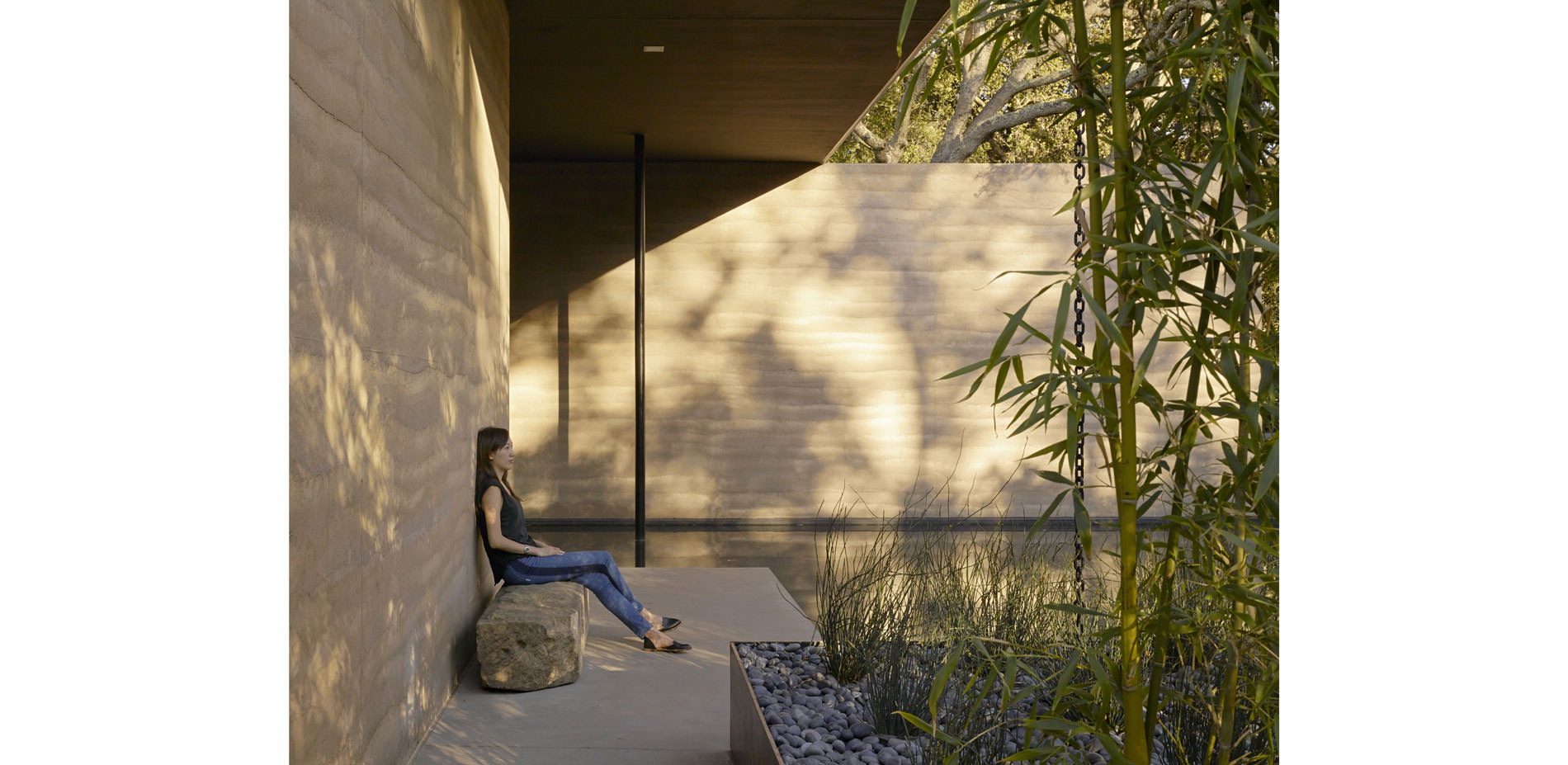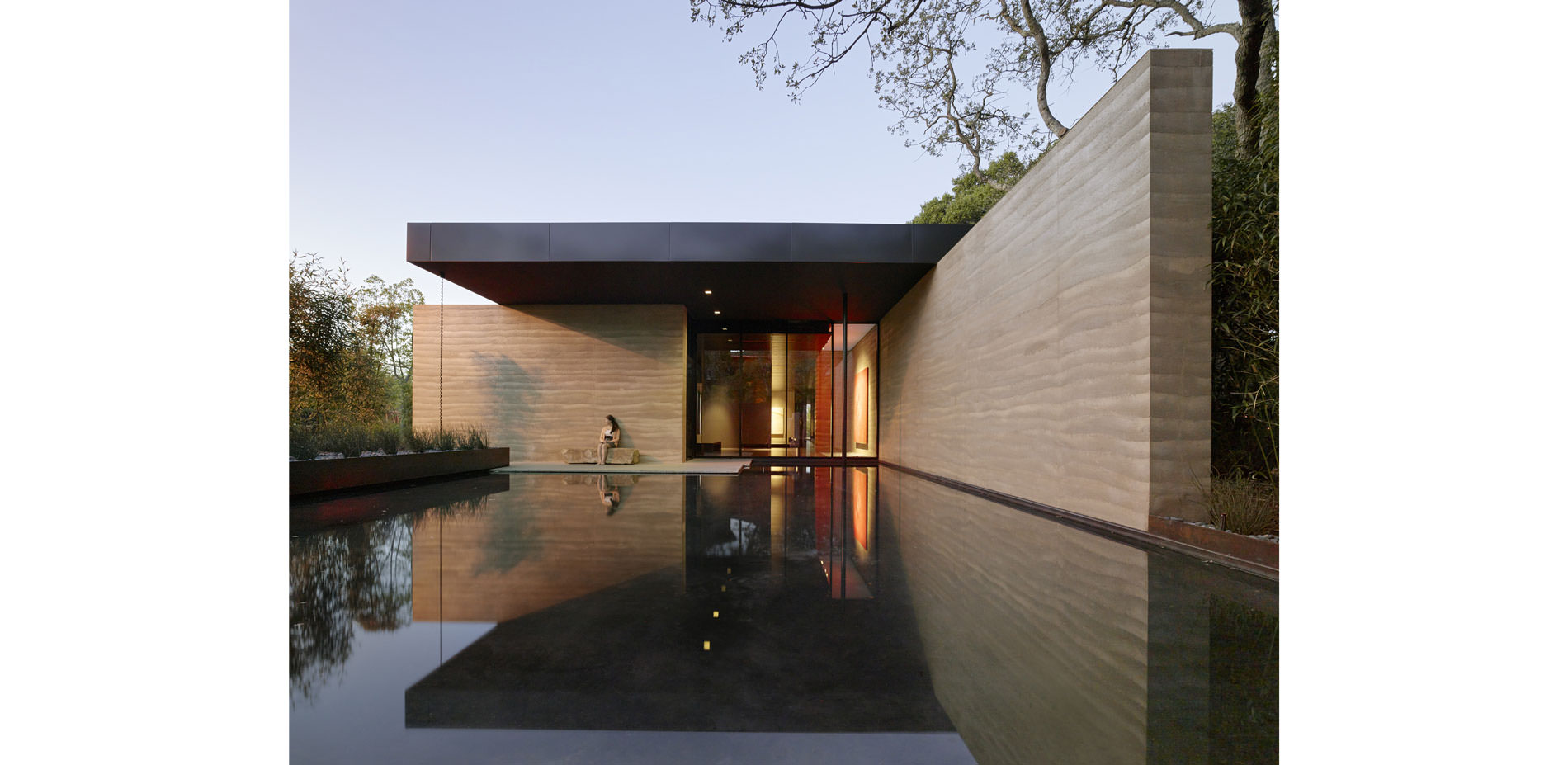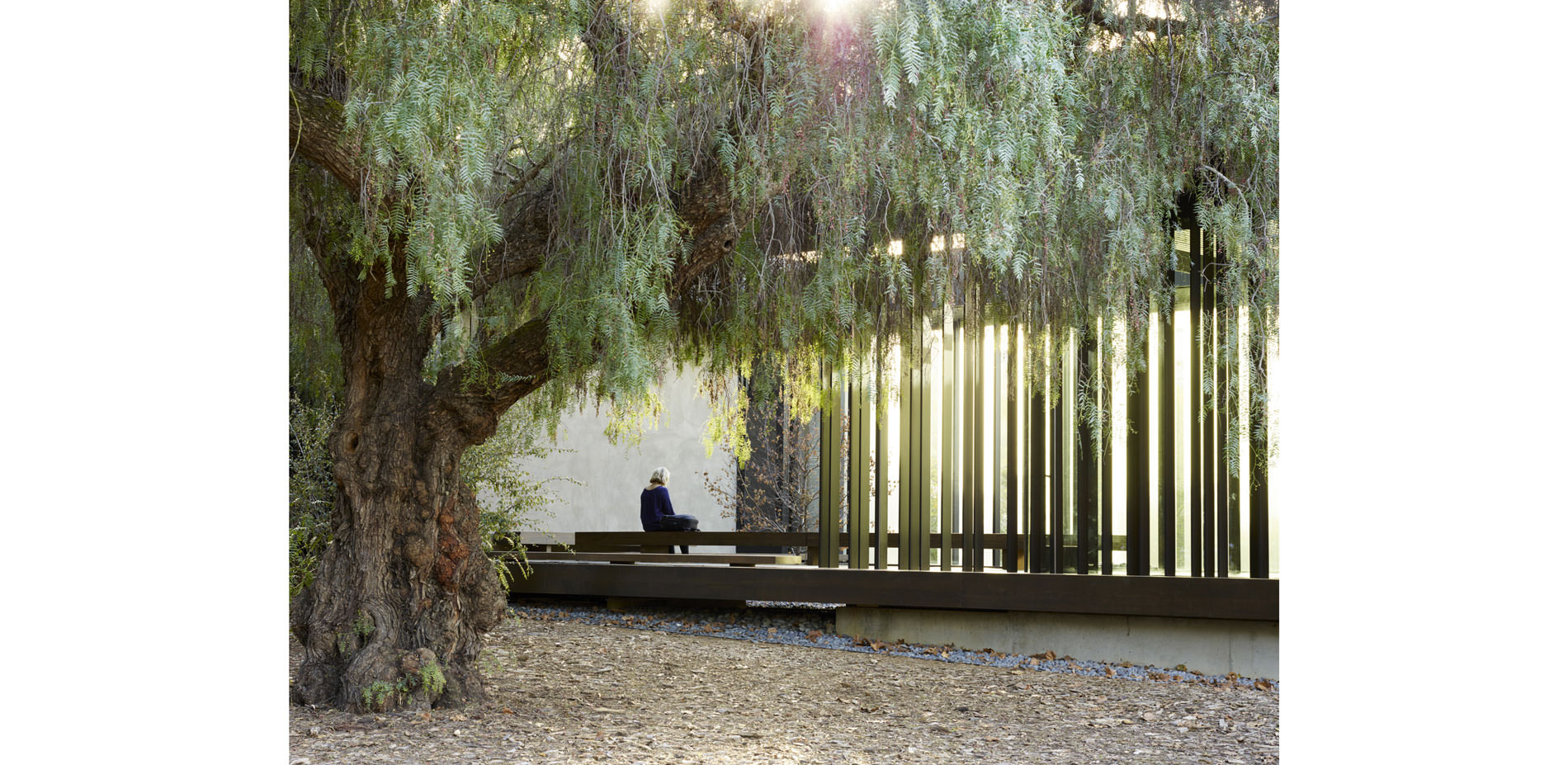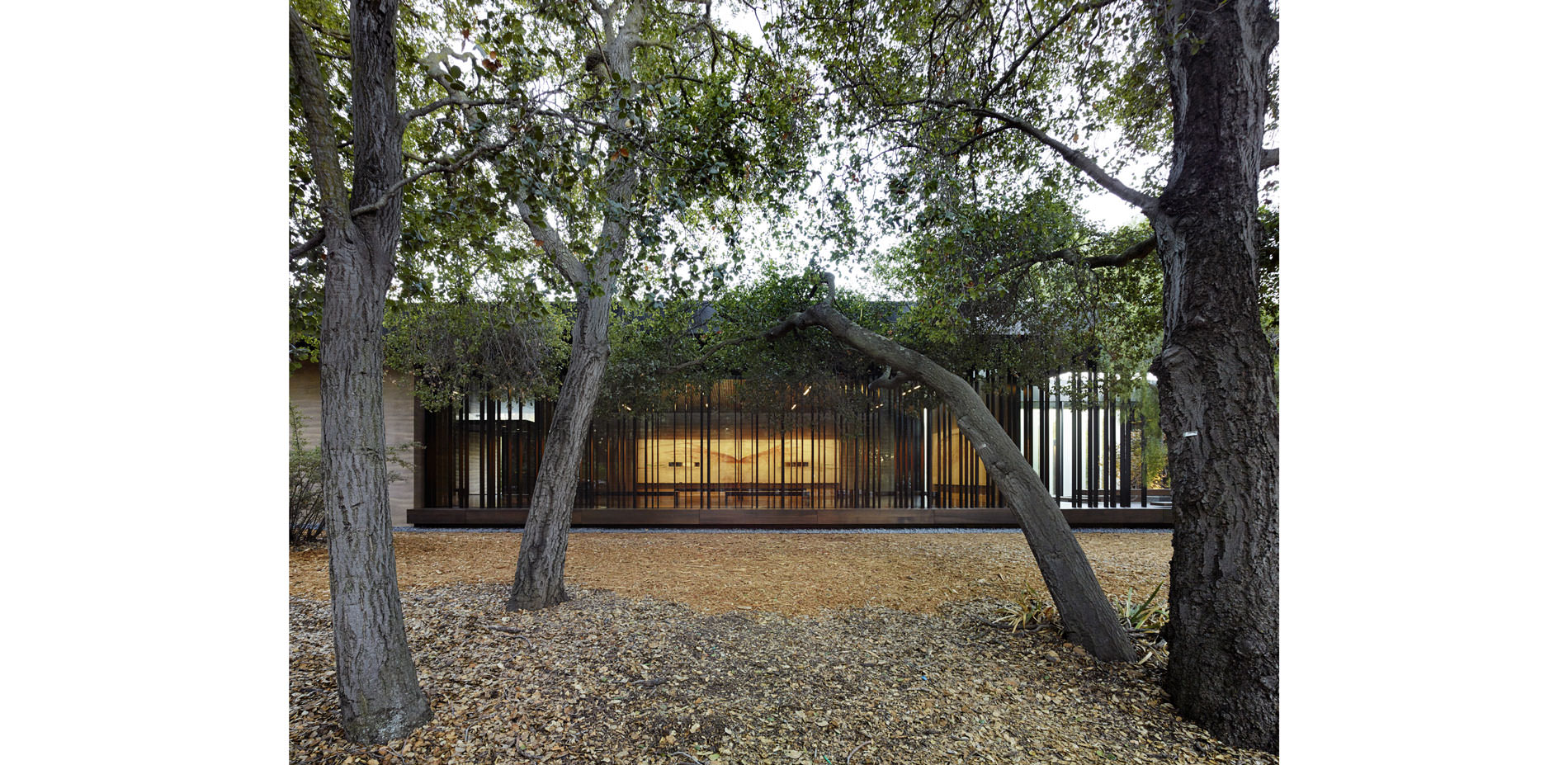Windhover Contemplative Center
Honor
General Design
San Francisco, CA, USA | Andrea Cochran Landscape Architecture | Client: Stanford University
One of my favorites. It showed such restraint in the indoor/outdoor relationship. It was seamless.
- 2017 Awards Jury
PROJECT CREDITS
Design Team
- Andrea Cochran, FASLA
- Megumi Aihara, ASLA
- Horng-Sheng Tu, ASLA
Client
- Maggie Burgett, Project Manager
Architect
- Aidlin Darling Design
Structural/Geotechnical Engineers
- Rutherford and Chekene Structural and Geotechnical Engineers
Civil Engineer/MEP
- BKF Engineers
General Contractor
- SC Builders
Landscape Contractor
- Techcon Landscape
Lighting
- Auerbach Glasow French Design
Building Fountain Contractor
- Monument Pools
PROJECT STATEMENT
The Windhover Contemplative Center, named for a series of paintings by artist Nathan Oliveira, simultaneously functions as an art gallery, spiritual sanctuary, and contemplative garden on the busy Stanford Campus. Using Oliveira’s art as a vehicle for personal renewal, the center provides a place for students, faculty, and staff to decompress and re-center themselves. The integrated design capitalizes on the building’s unique context -- adjacent to an existing oak woodland – to provide a series of spaces that allow visitors to experience Oliveira’s paintings in concert with an inspiring natural setting. A collaborative approach to building and landscape shaped nearly every aspect of the design, from the carefully choreographed entry sequence; to the visual and physical permeability between the interior and exterior spaces; to the interplay between the building materials, light, and shadow. Windhover represents a new typology for institutional design, offering a lush, green sanctuary for viewing art and fostering personal well-being.
PROJECT NARRATIVE
Set within an existing oak woodland on the site of a former parking lot, the Windhover Contemplative Center is comprised of a 4,000-square-foot art gallery and a series of tranquil outdoor spaces dedicated to exhibiting Nathan Oliveira’s work as a vehicle for personal renewal. While the artist and Stanford professor passed away in 2011, the center realizes his dream that his paintings, inspired by poetry and the landscapes around Stanford, be displayed in a dedicated, contemplative space immersed in nature.
The long, narrow building, on a one-acre site, is bounded by a major campus thoroughfare, a heavily used bike path, and a large dormitory. The carefully choreographed entry sequence provides an experientially rich transition between the bustling campus and the chapel-like gallery: a crushed stone path leads visitors through a grove of ginkgo trees and past a tall wall of bamboo, allowing them to shed the outside world before entering the center. Within the building, the interior spaces merge with a series of outdoor rooms intended for quiet contemplation. Wide panes of glass and vertical fins frame views back out to the woodland and courtyards. At the rear of the building, a still reflecting pool defined by a rammed earth wall, a weathered steel screen, and a stand of bamboo are designed to quiet surrounding distractions and turn visitors’ focus towards the ephemera around them. At the core of the building, a Zen-inspired courtyard opens to both the sky above and the adjacent oak woodland, offering views of a meditative labyrinth nestled among the trees beyond.
Collaborative Design Approach
From the outset, both the architect and landscape architect envisioned the structure and landscape as fully integrated, and this concept shaped nearly every aspect of the project. This process began with careful siting of the building. At the street side where visitors approach the entry, the architecture subtly hovers above the ground. A sense of procession into a sacred space begins the moment the visitor steps past the weathered steel scrim that serves as a threshold between the street and the center. As the visitor approaches the front door, the architecture and landscape work in harmony to seamlessly negotiate the four-foot grade change that occurs over the length of the site. The long, linear building changes in concert with the gently sloping topography, nestling into the earth at the opposite end. The grade change, though subtle, is an essential component to the experience of approaching and receding deeper towards an experience of contemplation and reflection.
In addition to this reciprocity between the architect and landscape architect, a number of other collaborations shaped the design. Throughout the process, the team worked with Stanford’s Dean of Religious Life as well as students at the university to incorporate their goals for the center into the design. They also met with the family of artist Nathan Oliveira and spent time at his studio to ensure that the new complex would appropriately honor his legacy.
The practical aspects of realizing the project required working closely with a number of consultants at the university. The landscape architects consulted with Stanford’s arborist throughout the project to ensure the health and protection of the site’s trees, and -- together with the architects -- to incorporate the limbs of an existing tree into an opening in the building overhang. The team also worked with the campus project manager to select salvaged stone pieces for sculptural elements from the campus “bone yard.”
Site-Specific Design
The project’s setting on the busy Stanford campus presented a number of unique challenges. Providing a sense of privacy required visually screening out the distractions of the adjacent street, bike path, and dormitory. The design team balanced this imperative with campus safety concerns by implementing strategies that create a feeling of enclosure while maintaining permeability. Scrims and porous plantings maintain a sense of openness and visibility that ensures that visitors feel safe in the center at any time of day. Given the residential nature of the campus, it was important to the design team that the landscape courtyards remain accessible at night. Even when the building is closed, students can view the paintings within the center and reap the benefits of the meditative spaces and natural setting.
The unique ecological context of the site also strongly influenced the project. The oak woodland adjacent to the site, designated as a salamander habitat, was carefully protected throughout construction. In addition, the site contains a number of native oaks, California pepper trees, and the university’s only Chinaberry tree; the project team worked to design and site the building elements around this sensitive ecosystem. Sustainable principles also shaped the project’s planting design, which consists of low water use and low maintenance species.
Materials and Installation
The project’s innovative materials palette reinforces the deep engagement with nature that is integral to the program and overall design concept for the complex. Rammed earth walls, weathered steel, stone, water, gravel and decomposed granite immerse visitors in a tactile environment. These materials amplify the experience of ephemeral phenomena, drawing visitors’ attention to the sound of stone crunching underfoot, the movement of the breeze across the water, the play of light and shadow against planar surfaces.
The clean tectonics that the design team envisioned for the project required thoughtful detailing and a high level of craftsmanship, goals complicated by the realities of an aggressive schedule and a tight budget. Challenged to create a museum-quality space with limited resources, the landscape architects devised innovative approaches to preserving the integrity of the design. These strategies included sourcing sculptural elements from the university’s “bone yard” (a site with remnant stone pieces from previous construction projects), and detailing the reflecting pool to be cast in one pour -- a feat that required careful detailing and oversight to ensure quality control. Moreover, in the absence of a fountain consultant, the landscape architects worked with the landscape contractor to design-build the mechanical system for the pool.
A New Paradigm
The project represents a new typology in institutional design, founded on the premise that there is a universal need for reflection and quiet contemplation to sustain personal well-being, and that the combination of art and nature can act as a source of spiritual renewal. Windhover offers the Stanford community a place unlike any other to shed the daily intensity of the academically challenging university environment and replenish their inner spirits—and in turn, their energy, creativity, and passion.
PRODUCTS
Product Sources: FURNITURE
- Bike Racks: Creative Pipe, Benches: Custom
Product Sources: DRAINAGE/EROSION
Product Sources: FENCES/GATES/WALLS
- Custom, Weathered Steel
Product Sources: IRRIGATION
Product Sources: LUMBER/DECKING/EDGING
- Landscape Edge: Dura-Edge
Product Sources: STRUCTURES
Product Sources: SOILS
Product Sources: HARDSCAPE
- Concrete: Central Concrete Supply Company
Product Sources: LIGHTING
Product Sources: OTHER
- Custom, reclaimed stone from campus “Bone Yard”




























